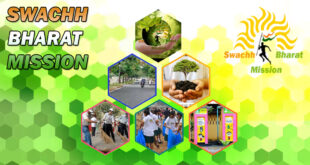Medical leaders and associations must take the lead in issuing effective and clear messages countering fake information
Along with the Hippocratic oath, the MBBS curriculum has a mantra: bar God, all must provide data. A good physician treats patients based on scientific principles derived from solid evidence. The physician’s personal experience may embellish or temper these principles, but should not be ‘contrary’ to them. In India, the mantra of scientific data and evidence is often not the basis of beliefs. The attraction of alternative, unscientific treatment methods has been irresistible. Aided by social media, ‘cure-mongers’, ‘quacks’ and ‘diet gurus’ issue medical diktats. Some are confused, and others believe them. One hoax relates to chronic diseases such as diabetes. The lure of a complete cure is greater than boring, often predictable medical advice. In addition, the effort needed to sustain lifestyle changes often pushes people to ‘miracle remedies’ that free them from lifelong restrictions.Not in all cases are perceptions and opinions of the public at fault. Sometimes confusing messages come from the scientific community. Maintaining glycosylated haemoglobin (HbA1c, used for monitoring blood sugar control and for diagnosis) value of less or equal 7% (meaning good blood sugar control) would decrease chances of complications. This cut-off point of HbA1c was based on data from large trials in the U.K. and the U.S., conducted over a decade. Recently, the American College of Physicians (ACP) said that maintaining HbA1c up to 8% (equivalent to average blood sugar value of 180 mg/dL) is fine. This statement has been vehemently and universally denounced, including by key Indian researchers (includes the authors). The distorted message now adds that blood sugar levels of 200-250 mg/dl are normal and only a value above 250 mg/dl is diagnostic of diabetes. Interestingly, the statement about increased limit of HbA1c by ACP was limited to control of diabetes, and not its diagnosis. The medical fraternity should partly take the blame for not countering frauds and fake news. Most physicians/scientists are media-shy. Many of them can write good scientific papers, but not something that appeals to the masses. Their messages on audio-visual media are considered ‘boring’. Effective communication to the masses is never taught in medical schools. On the other hand, quacks, frauds and fake godmen (and even some retired, disgruntled physicians) deliver incorrect/fake statements effectively. One retired physician even has the audacity to tell people that the best thing to do if one has a heart attack is to stay at home and do nothing; if one goes to a hospital, one would surely die!
People listen. People applaud. People discuss and forward such messages. It is therefore essential that more medical leaders and medical associations, issue effective and clear messages countering such fake news.
A. Misra (Delhi), A. Mithal (Delhi) and V. Mohan (Chennai) are experts in diabetes and related diseases
Check Also
Taiwan Quake Resilience
Concept : In the Taiwan region, the Philippine Sea plate is moving northwest towards the …
 Chinmaya IAS Academy – Current Affairs Chinmaya IAS Academy – Current Affairs
Chinmaya IAS Academy – Current Affairs Chinmaya IAS Academy – Current Affairs



